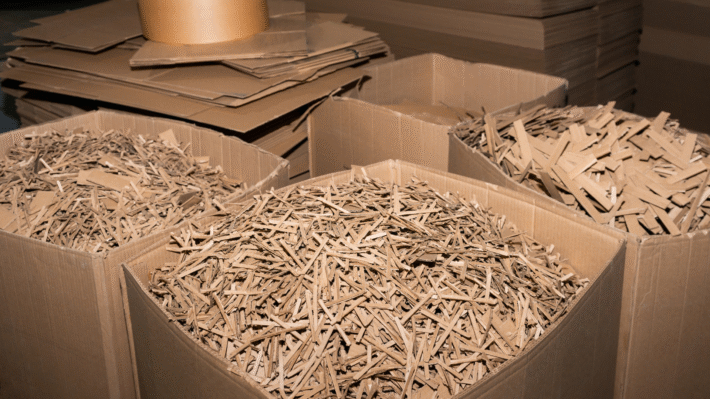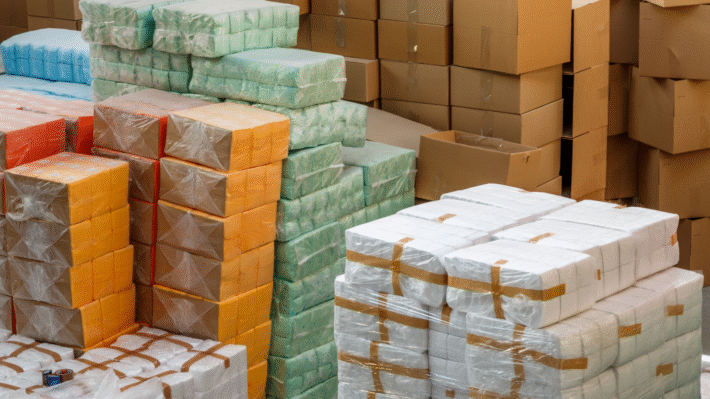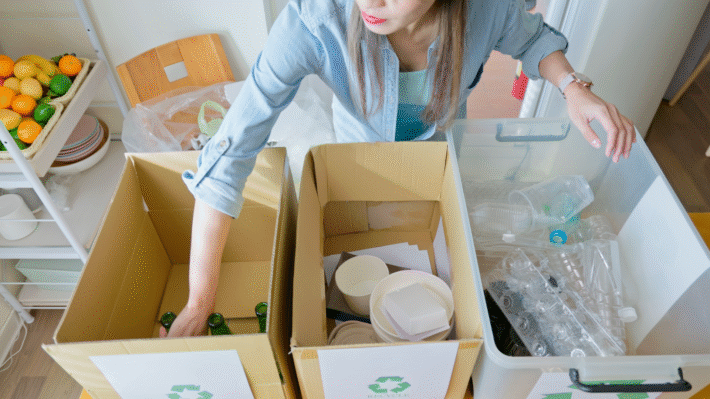Carbon Capture and Utilization Transforming CO2 Emissions into Valuable Resources

Carbon Capture and Utilization (CCU) is like turning rubbish into treasure. Imagine capturing CO2 emissions from places like power plants and turning them into products we can use. This isn’t just about cleaning the air; it’s about putting that carbon to good use and recycling it in clever ways. 🚀
Think of CCU as a paradigm shift in our approach to climate change. Instead of seeing carbon emissions as a problem, we can transform them into a valuable asset. By mimicking natural carbon cycles, CCU closes the loop, encouraging a sustainable economy that benefits us all.
As we dive deeper, you’ll discover the fascinating science and art behind capturing CO2, converting it into useful materials, and the bright future this innovation holds. Join the journey into a world where waste leads to wonder!
Understanding Carbon Capture and Utilization (CCU)
The Importance of CCU
Transforming CO2 into an Asset
Transforming CO2 into an asset is like turning a problem into a solution. Carbon Capture and Utilization (CCU) helps us take the CO2 that we don’t want in our air and find ways to turn it into something useful. Now, instead of letting CO2 pollute our air, we can grab it and use it to make things like fuels and materials. This makes CO2 a valuable resource instead of a waste product. By transforming CO2 into an asset, we not only help our environment but also create new opportunities for industries.
CCU’s Role in Climate Change
CCU plays a huge part in battling climate change. Why is that, you ask? Well, when we cut down the amount of CO2 going into the sky, we help cool our planet. Climate change is a big problem with rising temperatures, but CCU is one of the tools that can help us solve it. By capturing and using CO2, we can slow down the warming of our Earth. This technology is key to making sure our planet stays healthy and safe for future generations.
How CCU Works
The Process of Capturing CO2
The process of capturing CO2 is quite clever and exciting! Think of a giant vacuum that pulls in CO2 from the air. This is what CCU does. There are powerful factories, like power plants and factories, that produce CO2. With CCU technology, we can put devices in these places that catch the CO2 before it gets into the air. There are different kinds of capture technologies, such as Point-Source Capture from power plants and Direct Air Capture (DAC), which grabs CO2 directly from the air around us.
Ways to Use Captured CO2
Once we’ve caught all that CO2, what do we do with it? Well, there are many ways to put it to good use! CO2 can be turned into synthetic fuels, which are fuels made in a lab instead of dug up from the ground. We can also make plastics that are much kinder to our environment. On top of that, CO2 can help produce other specialized chemicals. It doesn’t stop there—plants and algae can use captured CO2 to grow better, which helps food production. By using CO2 to our advantage, we make the world a more sustainable place.
With the magic of technology and smart thinking, CCU allows us to turn carbon emissions into resources. It’s like having a second chance to use something that might have gone to waste, bringing exciting prospects for the future.
Capturing CO2 Emissions Effectively
Learning how to capture CO2 emissions is very important. It helps fight climate change and keep our world safe. Below, we will look at different ways to catch CO2.
Point-Source Capture Techniques
Capturing From Power Plants: Power plants burn coal and gas to make electricity. But, these fuels make CO2. We can capture CO2 using special tools and methods. Capturing CO2 at power plants helps reduce the amount released into the sky.
Industrial Emissions Capture: Factories also make CO2 when they build things. Places like cement factories and steel mills release a lot of it. They can use capture devices to grab CO2 before it leaves the building. This keeps the air cleaner.
Direct Air Capture (DAC)
Using Sorbent Technologies: Direct Air Capture uses machines to trap CO2 straight from the air around us. These machines use sorbents, which are materials that absorb CO2. They help collect CO2 from far away, not just from a factory or power plant.
Optimizing Locations for DAC: We need smart spots to build these DAC machines. Places with lots of wind or sunshine are perfect. This way, DAC machines use less energy, which is good for the world and saves money.
Innovative Capture Methods
Capturing CO2 from Oceans: Oceans have a lot of CO2. We can use methods to pull it out. Special filters and other tools absorb the CO2 from water. This helps balance CO2 in our air and oceans.
Mineralization for CO2 Capture: Mineralization is like a magic trick. It turns CO2 into rock-like materials. This stops CO2 from going back into the air. We mix CO2 with certain minerals to create this effect.
Transporting Captured CO2
Pipeline and Shipping Solutions: Once we capture CO2, we have to move it. Pipelines take it from point A to point B safely. If places are far, we can ship CO2 in containers. Both ways help make sure CO2 goes where it’s needed, like storage or usage spots.
Developing Infrastructure: We need strong infrastructure for all this work. Building pipelines and shipping centers needs planning. Good infrastructure means more CO2 gets captured and used, making our world cleaner.
Learn more about CO2 capture techniques and technologies at CCUS Information – UNFCCC.
Converting and Using Captured CO2
Converting CO2 into useful stuff is like turning trash into treasure! Let’s see all the creative ways we can use captured CO2. It’s not just about throwing it away but making it work for us.
Chemical Conversion of CO2
Creating Synthetic Fuels
Creating Synthetic Fuels is one way to use captured CO2. Instead of using fuels that hurt the planet, we can make new ones that are friendlier. These new fuels, like methanol and e-fuels, burn cleaner and can even power cars and planes. Imagine flying in a plane powered by CO2 fuel. Cool, right?
Producing Sustainable Plastics
Producing Sustainable Plastics is another smart idea. Regular plastics can harm our world, but CO2-based plastics are different. They break down easier and don’t harm nature as much. So, they help keep the environment clean while still giving us the plastics we need for toys, bottles, and more.
Biological CO2 Utilization
Using Algae for CO2 Conversion
Using Algae for CO2 Conversion is like setting nature to work. Algae are tiny water plants that love sucking up CO2. They can turn it into many things, like biofuels and food for animals. These little green machines help the planet and give us useful products.
Enhancing Agriculture with CO2
Enhancing Agriculture with CO2 can make crops grow better. Farmers can use CO2 to boost plant growth, helping us have more food. This helps feed more people without harming the earth. It’s like giving plants a bit of extra energy to grow strong and healthy.
Innovative Material Uses
Creating Carbon-Negative Concrete
Creating Carbon-Negative Concrete is magic for builders. Normally, making concrete releases CO2, but carbon-negative concrete captures more CO2 than it releases. So, every building made with it helps fight climate change. Imagine buildings that make our air cleaner!
Utilizing CO2 in Nanomaterials
Utilizing CO2 in Nanomaterials creates advanced materials. These are tiny, tiny materials with big benefits. They can even strengthen things like phones and sports gear. All while using up CO2 and helping save the planet.
Energy Recovery from CO2
Enhanced Geothermal Recovery
Enhanced Geothermal Recovery uses CO2 to heat up rocks under the ground, creating energy to power our homes and cities. This smart use of CO2 can make sure we have enough electricity, and it’s clean and endless.
CO2-Based Energy Storage
CO2-Based Energy Storage is like a giant battery. It holds up CO2 and releases it as energy when we need it. It’s another way to use CO2 in energy keeping our world humming along with clean power.
Each of these ideas shows how captured CO2 can become something we use and enjoy. From making new fuels to storing energy, CO2 is not waste but a smart helper for planet Earth.
Building a CCU-Supported Infrastructure
Developing Industrial Hubs
Creating CCU Clusters
Developing industrial hubs is key to building CCU-supported infrastructure. Imagine a place where factories and CCU plants all work together as a team. This is what we call a CCU cluster. In these clusters, industries are located close to each other. They share resources like pipelines and storage facilities to save costs. One company’s CO2 can become another company’s raw material. It’s like a neighborhood where everyone shares their toys. CCU clusters make the whole process of capturing and using CO2 more efficient and less costly.
Integrating Existing Infrastructure
Sometimes we don’t need to build everything from scratch. Instead, we can use what’s already there. Integrating existing infrastructure means using current pipelines, storage tanks, and roads to carry and store CO2. By doing this, we save money and time. This is like using an old backpack to carry new school books. With a few updates, old systems can be very helpful in CCU projects, making it easier to get started quickly.
Renewable Energy and CCU
Integrating Power-to-X Technologies
Power-to-X technologies are like magic tricks that turn renewable energy into something useful, like fuel or chemicals. When we use wind or solar power, we can transform it into hydrogen or other fuels through CO2 capture. This process helps store renewable energy when the sun isn’t shining or the wind isn’t blowing. Creating tech that links CCU with renewable sources is a brilliant way to ensure we always have energy when we need it most.
Utilizing Green Hydrogen
Green hydrogen is a clean fuel that comes from splitting water using electricity from renewable sources. When CCU teams up with green hydrogen, we can create a powerful duo that helps reduce CO2 in the air. Hydrogen can be used to power cars, heat homes, and help industries like steel and chemical plants reduce emissions. By linking CCU to the production and use of green hydrogen, we make our planet a cleaner place to live.
Storing CO2 Effectively
Exploring Geological Storage
When it comes to storing captured CO2, nature gives us a hand. Exploring geological storage involves using deep underground rock formations to store CO2 safely. These storage sites can be old oil fields or specific rock types that keep CO2 from escaping. It’s like hiding treasure deep underground where it stays safe and sound. Geological storage is a reliable method to ensure captured CO2 doesn’t end up back in the atmosphere, helping us combat climate change effectively.
Engaging in Mineral Carbonation
Engaging in mineral carbonation is like turning CO2 into rock. This process involves reacting CO2 with natural minerals to create stable compounds that geologists refer to as carbonates. These carbonates are safe and can be stored long-term without risks of leakage. It’s like capturing CO2 in a jewelry box made of stone that never lets it out. Mineral carbonation is a promising method for permanent CO2 storage and can even be used in construction materials, offering new ways to reuse captured CO2 in building infrastructures.
Encouraging CCU Adoption
To really get CCU (Carbon Capture and Utilization) off the ground, we need more than just cool science. It needs a real push. How do you get a country to do something new? You offer them cash benefits, clue them in on rules, teach them why it’s great, and find people to fund it all!
Economic Incentives for CCU
The cash part is important. Imagine you are looking at a menu. If one item is free, you will go for it, right? When countries or companies think about using CCU, governments can make it look really tasty.
Leveraging Carbon Pricing
Carbon pricing is like paying rent, but for the carbon you put in the air. If companies have to pay a lot for carbon, they will want to use less of it. That is where CCU comes in. Governments can say, “Hey, if you capture carbon, we will give you a break!” This makes companies think, “Yes, I want that!”
Exploring Tax Benefits
Taxes can be big and scary, but what if using CCU got you a tax cut? Companies love a tax discount. If they know they can save money by using clean energy and capturing carbon, they might be more eager to try CCU. Tax breaks can be like a giant welcome sign pointing towards green tech!
Implementing Regulatory Frameworks
For anything new, rules are needed. They ensure everyone is doing the right thing, like saying “Red means stop.”
Setting Standards for CCU
Imagine everyone building their own treehouse. With no rules, some might just use one nail! Standards for CCU are like giving everyone the best treehouse plan. It makes sure every company capturing carbon and reusing it is doing it safely and effectively.
Conducting Environmental Assessments
Rules are not just about building treehouses but understanding where to build them. Environmental assessments help check if CCU projects are good for the planet. This way, we ensure that capturing carbon helps, not harms our big Earth home.
Cultivating Markets and Consumer Awareness
If nobody knows why CCU is cool, how will they support it? Time to spread the word!
Promoting CCU-Derived Products
Imagine a lemonade stand. If no one knows it’s there, it could be the best lemonade ever, but no one will buy it. Products made from captured carbon, like certain plastics or fuels, need to be promoted. Stores can say, “Hey, look! This stuff helps our planet!”
Educating for Sustainable Choices
Teaching people about CCU is super important! When everyone understands why products made with CCU are awesome, they will buy them more. Schools, companies, and even fun TV shows can help everyone learn about making great choices for helping the Earth.
Securing Investment and Funding
Lastly, even with all the cool stuff CCU does, it takes money to start. Just like opening a new ice cream shop needs a budget.
Creating Public-Private Partnerships
Public-private partnerships are like a friendly handshake between the government and companies. By working together, they can drive CCU forward. The government can provide a safe starting place, while companies can bring their smart ideas to life.
Attracting Venture Capital
Venture capital is when investors put their money into exciting new ideas. By showing them the promise of CCU, they can be convinced to invest in these planet-saving technologies. CCU is innovative, and forward-thinking investors love fresh, groundbreaking ideas.
In summary, by offering incentives, setting rules, teaching everyone, and finding funds, CCU can become the favorite new way to help our planet! If you’d like more info, check out resources on carbon capture strategies.
Innovations and Expansion in CCU
Exploring Technological Innovations
Utilizing AI for CCU Advancements
AI and Carbon Capture are like peanut butter and jelly—they fit together well. AI helps make capturing CO2 even more efficient. By predicting trends and managing operations, AI can help reduce emissions. Thanks to machines learning from data, we can discover better ways to capture and use CO2. With AI, it’s like having a smart assistant in CCU labs.
Developing Advanced Catalysts
Catalysts play a big role in turning CO2 into useful stuff. Scientists are working hard to build better catalysts that work faster and use less energy. These super catalysts make the process of changing CO2 more effective. By improving catalysts, we are making a big step toward a world where CO2 is no longer a problem but a resource.
Encouraging Global Collaboration
Fostering International Partnerships
Teaming up globally is key for success. Different countries share their knowledge to improve CCU technologies. By working together, nations can pool resources, share experiences, and come up with new ideas. International partnerships help CCU grow faster and become more effective in every corner of the world.
Sharing Knowledge Openly
Sharing what we know is super important. Like kids sharing toys, researchers share their findings to advance CCU technologies. Open platforms allow scientists and engineers worldwide to learn from each other. This openness spurs innovation, making CCU stronger and more advanced.
Considering Ethical and Social Impacts
Ensuring Access to CCU Technologies
Everyone deserves access to new technologies. It’s important to make sure that all communities, rich or poor, have access to CCU tech. Making CCU available to everyone reduces carbon emissions globally. It also ensures that all people can enjoy cleaner air and a healthier planet.
Addressing Social Impact Concerns
Think about the people. Developing CCU technology isn’t just about science; it’s about society, too. Considering how these technologies affect everyday people is crucial. From job creation to changing local economies, we must ensure CCU projects bring only positive change to communities.
Exploring Space-Based CCU
Space is not just for aliens. CCU can be done in space too! By capturing CO2 in outer space, we can study and use it like never before. Exploring space CCU can lead to super exciting discoveries and help us understand our world better. Plus, it just sounds cool, doesn’t it?
One comment
Comments are closed.




[…] it comes to reducing CO₂ emissions, geopolymers have a big advantage. Traditional Portland cement production involves heating […]